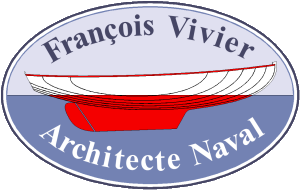CNC (Computer Numeric Control) machines are becoming more and more common. For example, companies making signalling panels are frequently equipped. Therefore a boat-builder, amateur or professional, may sub-contract the cutting to a local company. This is useful in countries or areas where I do not have any kit supplier partner.
For that purpose, I am now selling CNC files for many boats. These files (dxf format) are readable by all CAD software. I have made them to be compatible with most CNC machines. Therefore, it is rare to get technical troubles. If any, I will modify the files, and if unsuccessful, I will refund the files’ price. Most parts are cut at the final dimension. Hull strakes have some extra length at both ends. Deck parts have a double curvature and a margin all around, allowing adjustment when laid down.
There are several cutting techniques: mechanical routers, laser or water jet. I prefer mechanical routers. The laser burns the plywood edges and may reduce the epoxy adherence. Water jet wet the plywood and, if the parts are stacked not fully dry, may cause damages. The files are generally made for a maximum 8 mm tool diameter. As a rule, the nesting of parts is made into 2.44 x 1.22 m (8′ x 4′) panels, the most common size in the world.
The length to be cut for one boat is several hundreds of meters. For example, there are 440 m to be cut for an Ilur. CNC cutting saves a large amount of working time. Just imagine the time required to mark the parts on the plywood panels, cut them with a jigsaw, mostly at arm’s length, fair the edges with a plane for such a length! that is why I strongly recommend CNC cutting. The plans for my larger boats do not include dimensioned drawings, and only CNC cutting is proposed. This is due to the fact the building process is optimised for that.
